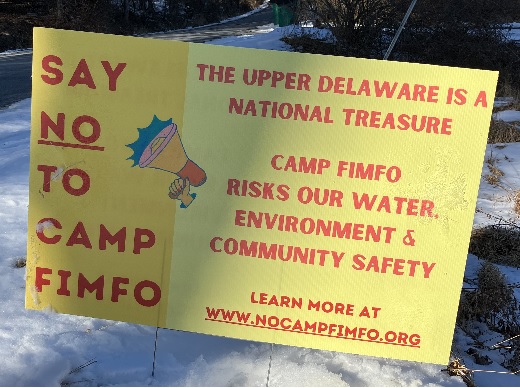Viability of Shale Gas Power Source in Doubt Due to Cost
December 26, 2012New Fears Over Fracking Groundwater Contamination
January 8, 2013HURRY! Comments to NYS DEC are due by Friday, January 11, 2013. Your comments are vital to the future of NYS and the Delaware River Basin!
CLICK HERE to download sample comment letters.
CLICK HERE to go to Thirty Days of Fracking Regs for help in generating your comments.
FROM Chip Northrup:
The proposed regulations are not based on science.
- The DEC does not cite any studies, papers or statistics to justify the proposed regulations.
- The DEC is required by law to cite its source material – but cites none at all (because the only science in these regs. is political science).
- If the DEC does not cite its source material, the regulations are incomplete – and have to be redone.
- Or the DEC can state that the regulations are not based on any source material – and the regulations will be subject to legal challenges.
The DEC has misstated the purpose of the underlying statute, ECL 23.
- By replacing “regulate oil and gas” to “promote oil and gas”.
- Which reveals its underlying bias at the DEC towards “promoting” oil and gas.
- Might point that out in your comments.
FROM Catskill Mountainkeeper:
Some of the more egregious failings in the state’s proposed fracking regulations are:
1. Minimal setbacks from fracking wells put our families, children and the environment at risk.
The DEC has arbitrarily picked 500 feet as the distance that no well pad may be located from a residential water well, domestic supply spring, water well or spring used as a water supply for livestock or crops, an inhabited dwelling or place of assembly. Not only is there is no scientific basis to claim that a 500-foot setback will provide safety, studies in Colorado have shown severe health effects to people and livestock living up to a half a mile away from drilling rigs.
2. There are no provisions for the disposal of toxic wastewater.
Despite the fact that fracking waste is incredibly toxic and can be radioactive, it is legally treated no differently than other waste because of federal exemptions specific to the oil and gas industry. That means that drill cuttings could end up in our municipal landfills and opens the possibility that wastewater containing benzene, biocides and radiation could be run through our sewage treatment plants.
3. There is nothing in the regs that prevents drill rigs from encircling and fracking under state land or fracking under lakes, streams and rivers.
The regs prohibit drilling on the top of state lands, but do NOT prohibit fracking operations on adjacent private lands or under lakes, streams and rivers. Underground horizontal drilling could extend fracking up to a mile underground into state lands.
4. The chemical constituents in fracking fluid can be hidden from the public—and from medical professionals—at the companies’ request.
There is no way that public health experts can predict the health consequences of exposure to fracking chemicals if they are unidentified. Without public disclosure we cannot offer informed consent to the risks we are being asked to assume.



